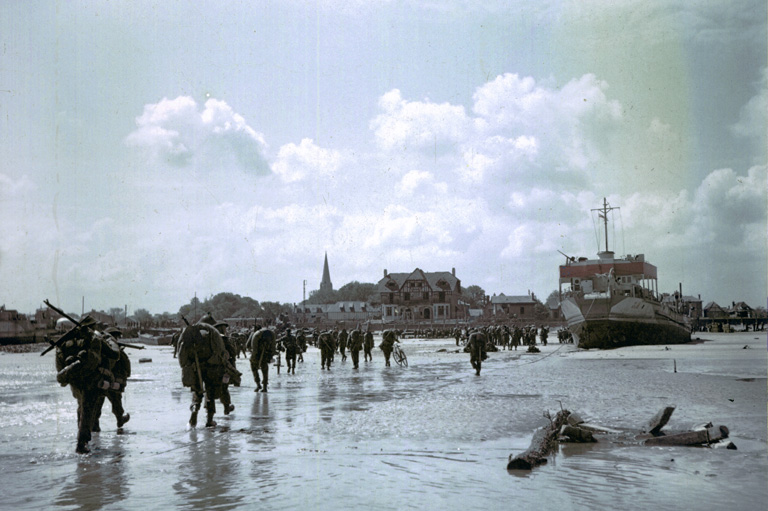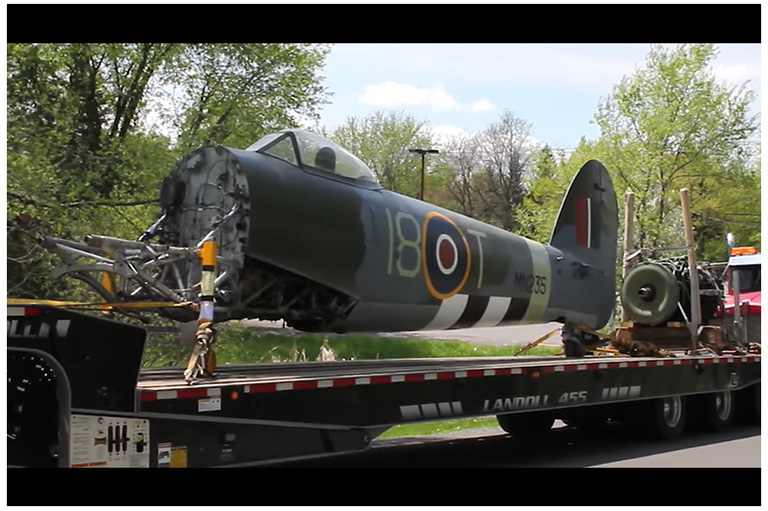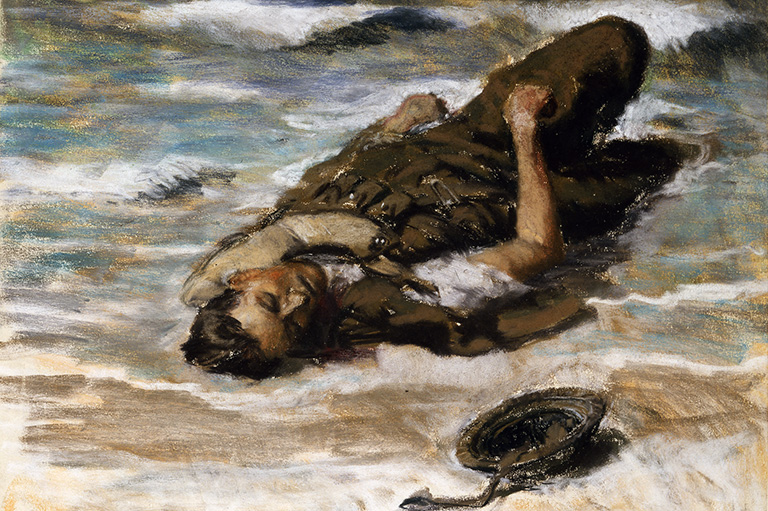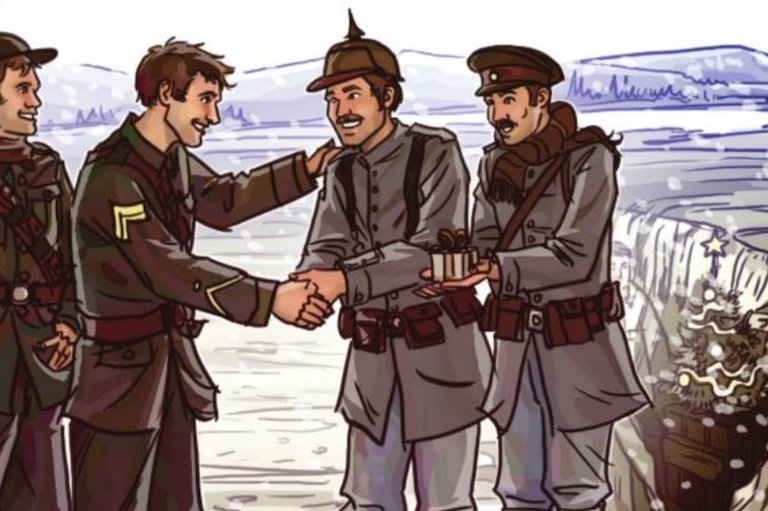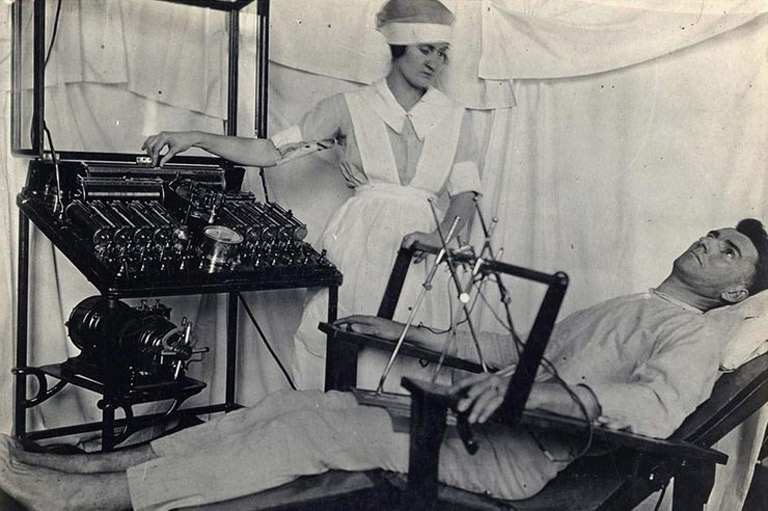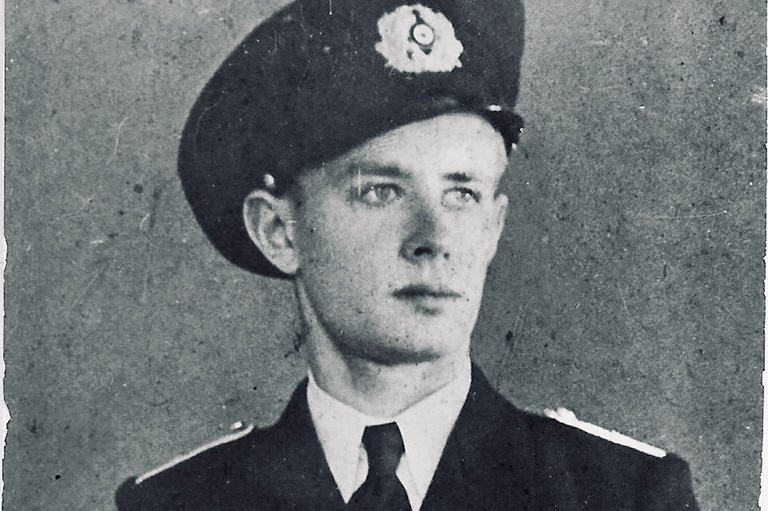Discover a wealth of interesting, entertaining and informative stories in each issue, delivered to you six times per year.
D-Day Air Raid: Terror at 2,000 Feet
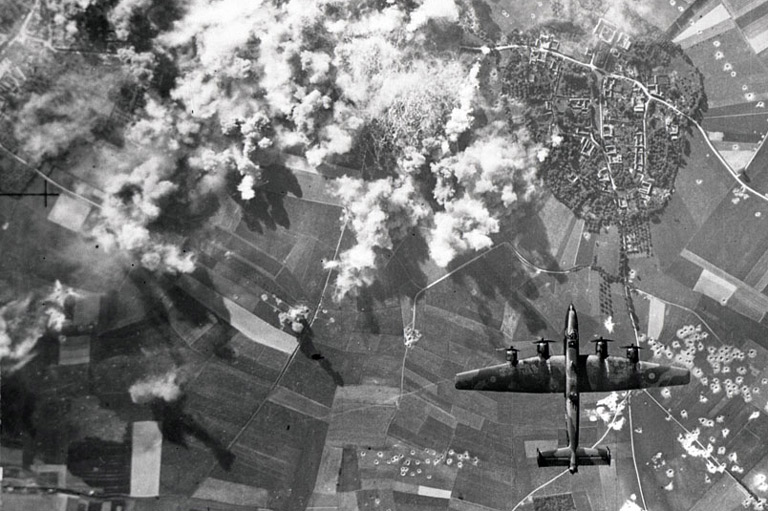
In the early morning hours of June 6, 1944, Flight Lieutenant C.A. “Tony” Selfe and his crew were on their way to the Cherbourg Peninsula of France. Their mission was to bomb German railway yards in order to prevent enemy forces from moving reinforcements to the Normandy region during the Allied D-Day assault.
A short time into their bombing run, disaster struck. The following excerpt from Selfe’s memoir describes the scene:
Operation of June 6, 1944 (D-Day)
This was a night trip, late on D-Day. Half the squadron had gone out the night before the landings took place on the Normandy coast.
Our particular aim was to bomb the railway marshalling yards at Coutance on the Cherbourg Peninsula to help prevent the Germans moving men and armament to the western landing area. We were in Halifax III G' George, Serial Number LW377, and this was to be a little trip with a late evening take-off.
As I recall, we had about 11,000 lbs of 500- and 1000- pound bombs, set to explode on impact. Possibly there was one or two set for delayed response.
As we were on our way to the target over the English Channel at about 2,000 feet altitude, we were amazed on two counts. First, the Channel was full of shipping going to the landing areas (and some coming back, no doubt), and second, we saw many aircraft, not bombers, coming back. These we mostly C-47 and C-46 transports used for dropping paratroops and equipment.
We made our run-in from the west at 1,800 feet. Other bombers were above and below and to the sides. Just before the time came for my bomb-aimer to release our bombs, there was a stunning impact and a stream of fire from just behind me and to my left. I thought at first we had been hit by anti-aircraft fire (Flak) and fought to control the aircraft. I pushed the appropriate fire extinguisher button (for the port inner engine) and pulled the jettison toggle for back-up bomb release. I got the aircraft on a level-keel, the fire went out and the mid-upper gunner reported that apparently a 500 lb bomb had gone through the wing, leaving a large hole between the P.I. engine and the fuselage, somehow missing the two 500 lbs bombs we carried there. The bomb had hit flat, not exploding) so the aircraft from which it came had been close above.
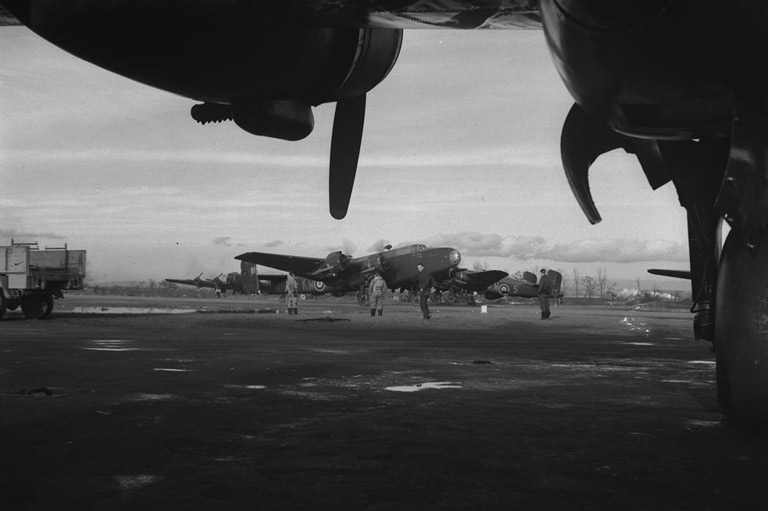
I checked the damage after turning southward away from the flak guns around the target. I had already found I couldn’t close the bomb doors, so the hydraulics were gone. The port aileron was inoperative, reducing my control over the aircraft. I had feathered (stopped) the P.I. engine as part of the fire extinguished procedure. It had stopped firing. Anyway, so it hadn’t been getting petrol because the fuel line was damaged. I was now down to just over 1,000 feet and could just maintain that altitude on three engines, with the open bomb-bay doors creating much drag. A few minutes later, my port-outer engine quit and I couldn’t maintain control without going into a descending turn to the left. Just as I was about to feather (stop) the port-outer engine (which was windmilling uselessly, causing drag), it fired up again with a roar. Apparently with the wing down it was getting some fuel it couldn’t get with the wings level. I clawed for altitude, got a couple of hundred feet, and asked my navigator for a heading for the nearest point on the English coast. It was Bold Head, between Dartmouth and Plymouth on the Devon Coast. My radio operator (Ross Bielby) got hold of an emergency frequency and told them we were trying to make the coast. The dilemma was that we were losing petrol and I could stop that by having the flight engineer shut off all fuel to the port side. That would mean I would lose the P.O. engine altogether and we would have to ditch somewhere in the English Channel where the water was cold and I would have to do a two-engined ditching. It made more sense to leave the fuel flowing and have partial use of the P.O. engine. We had about 100 miles to go. I did not yet know how quickly we were losing fuel.
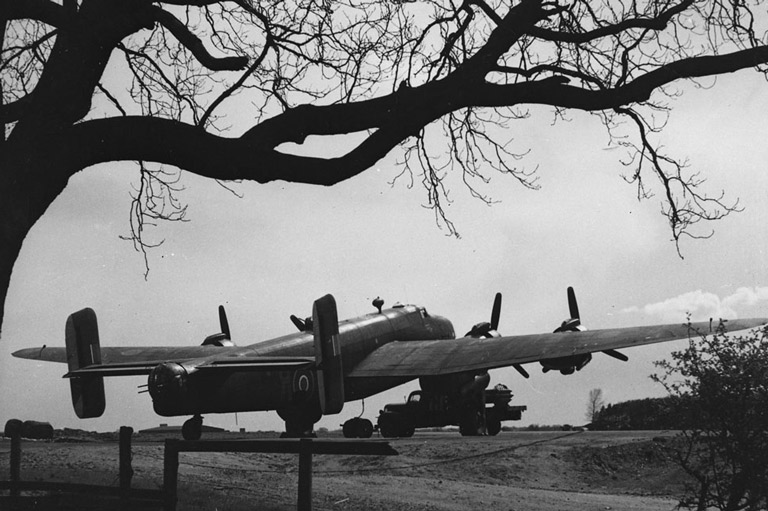
A couple of minutes later, the P.O. quit again, down we went and then it fired up again and we struggled for altitude. It was hard work flying a four-engined aircraft (no power controls) under these conditions and the bomb-aimer helped me on the aileron control while I was moving trimming controls back and forth. I had become aware that the dinghy storage area was partially where the bomb went through the wing and so a ditching wouldn’t have worked anyway. With bomb doors open the aircraft probably would have sunk almost immediately.
We proceeded across the Channel in this erratic fashion, falling and pulling up again. An airfield somewhere up ahead was prepared to take us in but everything ahead was blacked out, I couldn’t be sure where it was. It took an hour to cross the 100 miles of water.
Just as we approached the coast (cliffs), my flight engineer told me he figured we had perhaps five minutes’ fuel left. I decided then that once we were over land I would bail everyone out rather than run the risk of running out of fuel and doing a deadstick forced landing on a pitch-black countryside, normally a fatal procedure. As we crossed the coast, the P.O. engine quit again and we went down very steeply toward the rocks below where I could see the white foam. When we were at about 400 feet the P.O. started up belatedly and I regained control. I had had the crew lined up ready to dive out of the escape hatch in the nose. Only a couple (crew members) were plugged into the intercom system. As we were going down toward the surf below, I said to anybody who was listening “Well, I guess we’ve had it.” There was silence and then when the P.O. engine fired up, I started to ease the kite [slang for airplane] up and said, “Maybe we haven’t.” There was a faint cheer from somebody.
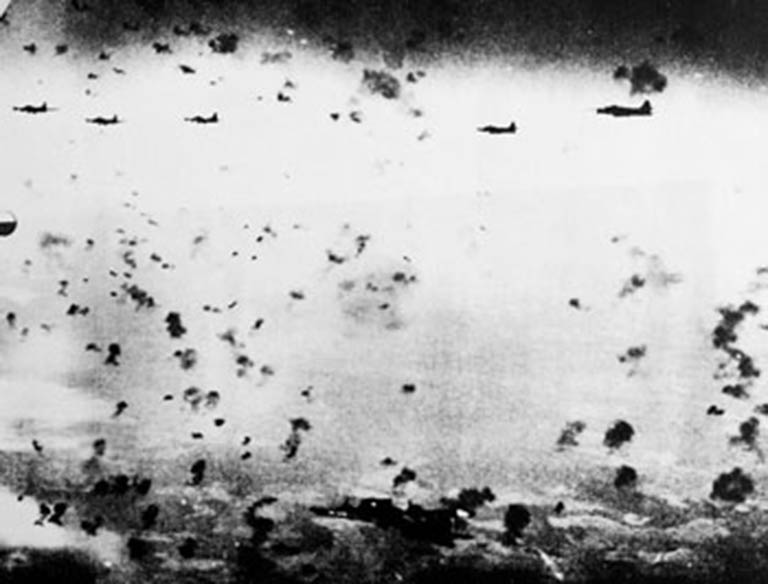
I got the aircraft up to about six hundred feet above the land and about half a mile inland and started bailing every one out. The I let the kite swing around toward the coast, trimmed it up for a gentle glide which I hoped would take it to the sea and climbed from my seat, getting my parachute harness hung up on the big undercarriage control lever which stuck up below the right-hand side of the pilot’s seat. I pulled this loose, and climbed down into the nose. I looked at the black hole of the escape hatch for a second and then dived out. I must have pulled the ripcord a little soon because when I was jolted upright I saw the kite quite close above me.
As we were not very high, there was a strong desire to get the parachute inflated. I had only swung a couple of times and then hit heavily by a stone wall and a gravel pile. I had tried to miss these objects and landed quite hard but apparently was intact. Later I found I had hurt my back but that, as they say, is another story. The aircraft had headed back toward the sea and apparently made a good landing in some medium-depth water just offshore. Some of it has now been salvaged. I rolled up my parachute, left it under a bush and found a lane heading back to the coast and, finally, a coast road. There was no traffic and when I came to a village it was deserted. Very eerie. I walked on and came to other deserted houses where I imagined I could hear faint voices of, I hoped, birds, calling me. I resisted the temptation to go down these dark entry-roads to the sinister houses with their strange noises and walked on finally I came to a barricade and a live village on the other side where a village bobby took me to his house for a cup of tea with his wife. There were searchers out in the countryside and one by one my crew members were picked up and we were taken to a spitfire field near Bolthead.
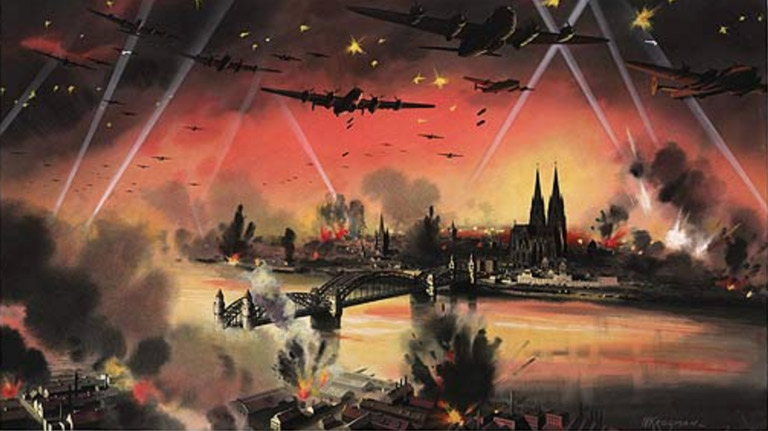
Miraculously, the crew suffered only mild injuries: Selfe had a sore back and leg. His navigator suffered a broken ankle, while his mid-upper gunner hurt his knee, and the flight engineer bit his tongue.
As Selfe later remarked: Compared to the likely alternative, we came out of it quite well. I was impressed during the last crucial hour or so by how coolly everyone appeared to be taking it. I was somewhat terrified myself but fortunately was too busy to do my brooding. During the rest of our tour of operations we had a fair number of emergencies and alarms but this one, on out ninth trip, was one to particularly remember.
We hope you will help us continue to share fascinating stories about Canada’s past.
We highlight our nation’s diverse past by telling stories that illuminate the people, places, and events that unite us as Canadians, and by making those stories accessible to everyone through our free online content.
Canada’s History is a registered charity that depends on contributions from readers like you to share inspiring and informative stories with students and citizens of all ages — award-winning stories written by Canada’s top historians, authors, journalists, and history enthusiasts.
Any amount helps, or better yet, start a monthly donation today. Your support makes all the difference. Thank you!
Themes associated with this article
You might also like...

Canada’s History Archive, featuring The Beaver, is now available for your browsing and searching pleasure!


